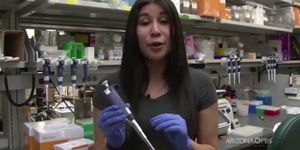NASA's Curiosity Rover Found This Alien Egg-Shaped Mass on Mars' Surface
NASA’s Curiosity rover rolls about the red planet’s surface always looking for things out of the ordinary that might be of interest to NASA. It attempts to search for life forms, as well as learn more about the composition of the red planet.
Curiosity is easily one of NASA’s most important red planet observation tools at this point in time, at least until the Mars 2020 rover can make its way over there.
Recently, however, Curiosity found something rather peculiar. It looks like a metallic alien egg straight out of science fiction movies, but NASA says it’s probably just a meteorite made of dense materials, including metals.

Image Credit: NASA/JPL-Caltech/MSSS
The object was first discovered on October 27th by the mast camera on the Curiosity rover, and it’s quite an interesting find actually.
Curiosity rover’s ChemCam, which is capable of using lasers to determine what something is made out of, fired its lasers at the rock several times. This essentially excites the electrons and emits certain light wavelengths; the type of wavelengths of light that get emitted are the key to what elements are present in the object.
ChemCam found traces of iron, nickel, and phosphorous among other still-undetermined elements.
“Iron meteorites provide records of many different asteroids that broke up, with fragments of their cores ending up on Earth and on Mars,” said Horton Newsom of the University of New Mexico, Albuquerque and a Curiosity ChemCam team member. “Mars may have sampled a different population of asteroids than Earth has.”
The findings reveal that this may be a piece of a once-molten core of an asteroid. It must have broken up at some point in time in space, probably due to some kind of space-based collision, and then this little guy ended up on the red planet as a result.
Curiosity will continue to explore the area to see if any more samples like this can be found. In addition, the rover will be looking for any signs of life in the Murray formation it’s currently driving around.
With NASA’s interest in one day retiring the International Space Station to put mankind on Mars, it’s important to think ahead and really understand the Martian environment before we make any big leaps.
Source: Space.com








